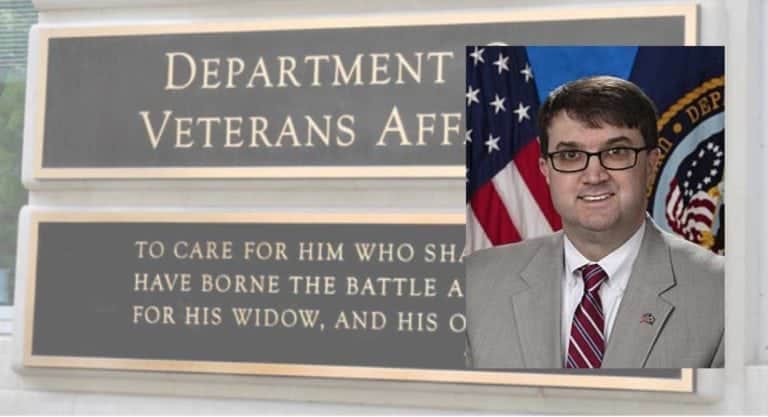New VA Burn Pit Registry Faces Scrutiny Amid Efforts to Address Health Impacts on Veterans
The content in this article does not represent the views of Disabled Veterans or its staff; it is compiled from various news sources around the web for informational purposes.
The Department of Veterans Affairs (VA) has recently unveiled an updated registry aimed at tracking veterans exposed to burn pits and other hazardous airborne substances during their service overseas. In collaboration with the Department of Defense (DoD), the VA has expanded the scope of this registry to potentially include up to 4.7 million veterans who served in regions with questionable air quality.
A New Approach or Repackaging the Old?
The VA’s announcement on Thursday highlighted the registry’s potential to propel scientific research into the health consequences of exposure to harmful elements such as smoke, sand, chemical fires, and fine particulate matter. The registry will contain basic information about veterans, including their deployment history. But this development raises a critical question: Is this truly a groundbreaking initiative or just a repackaged effort that may fall short of delivering the urgent solutions that veterans desperately need?
Persistent Concerns Over VA’s Commitment to Veteran Health
Critics argue that the VA’s previous attempts to address burn pit-related illnesses have been sluggish, with many veterans left feeling abandoned and without adequate support. The new registry, while more comprehensive, faces skepticism about whether it will genuinely lead to tangible improvements in veteran healthcare or if it will simply become another bureaucratic tool.
Veterans and advocacy groups have long expressed concerns over the VA’s handling of burn pit exposure cases. Many veterans report experiencing chronic health issues, such as respiratory conditions and cancers, believed to be linked to their exposure to toxic fumes. Yet, the response from the VA has often been perceived as inadequate, with slow recognition of these conditions and delayed benefits for those affected.
Will the Data Translate into Real Change?
The VA insists that the enhanced registry will serve as a critical resource for research, potentially leading to breakthroughs in understanding and treating the illnesses associated with burn pit exposure. However, the efficacy of this initiative hinges on how effectively the collected data is utilized.
Previous registries have been criticized for their limited scope and failure to prompt significant research advancements. While the VA’s latest effort includes more veterans, there remains a palpable sense of doubt as to whether this will result in the actionable insights needed to improve veteran care.
Moreover, the VA must address concerns related to privacy and data security, particularly as veterans may seek an opt-out form to withdraw from the registry if they feel their personal information is at risk.
The Need for Accountability and Transparency
For this registry to succeed, transparency and accountability must be prioritized. The VA must ensure that the data collected is not only accurate but also accessible to researchers and veterans alike. Moreover, the agency must commit to translating research findings into meaningful healthcare policies and benefits for veterans.
As the VA and DoD move forward with this new registry, the veteran community and watchdogs alike will be closely monitoring its progress. The hope is that this initiative will mark a departure from past failures and signal a genuine commitment to addressing the long-standing health concerns of veterans exposed to burn pits and other airborne hazards.
A Call for Ongoing Vigilance
The establishment of the updated burn pit registry is a step in the right direction, but it is only the beginning. Continuous oversight and advocacy are essential to ensure that this effort does not fall into the same traps as its predecessors. Veterans deserve more than just promises—they deserve concrete actions and results that will safeguard their health and well-being.
Frequently Asked Questions (FAQs)
1. What is the new VA Burn Pit Registry?
The new VA Burn Pit Registry is an updated system designed to track and collect data on veterans exposed to burn pits and other hazardous airborne substances during their service, with the goal of advancing research into related health conditions.
2. Who is eligible to participate in the registry?
The registry is open to veterans who served in locations with potentially hazardous air quality, including those who may have been exposed to burn pits. The Department of Defense estimates that up to 4.7 million veterans could be eligible.
3. How will the registry data be used?
The data collected in the registry will be used for scientific research to better understand the health impacts of exposure to airborne hazards. It is intended to inform future healthcare policies and benefits for affected veterans.
4. What are the concerns surrounding the registry?
There are concerns that the registry may not lead to significant improvements in veteran care, as past efforts have been criticized for being slow and ineffective. Critics emphasize the need for transparency, accountability, and actionable outcomes from the data collected.5. How can veterans enroll in the registry?
Veterans can enroll in the registry through the VA’s website or by contacting their local VA healthcare facility. The process involves providing basic information and details about their deployment history.




Why not include veterans who did not deploy but served in toxic environments as part of PACT Act. For me serving at Cheyenne Mountain Complex in Colorado Springs. Tunnels had diesel fumes from the diesel busses used to transport us I served from May 1966 to August 1968 breathing in those fumes I have allergic rhinitis, sinusitis and sleep apnea which all started during my active duty
Most of the people who work at VA who aren’t medical doctors, psychiatric or otherwise, were either irrational, some kind of abuser, some asshole, or someone who in general they should just pay to do something else. God knows who these administrative people are because they’re hidden somewhere for good reason. They deny much needed care in many cases. Whole system is a failed model. Doesn’t matter how much money they pour into it, it’s not gonna be optimal. Can’t even tell if the VA secretary has any control whatsoever over the place.
Veterans exposed to known respiratory carcinogens should be offered a low dose CT Lung cancer screening which can detect lung cancer early, during stage 1. The VA has publicly stated that 80 percent of lung cancers are curable when caught early.
The new CDC Study also identifies Camp Lejeune contaminated water as causing lung cancer.
Regarding Lung Cancer, The PACT Act kicks in only after a Veteran receives a lung cancer diagnosis which is usually stage 3 or 4 when it is less curable.
Low dose CT lung cancer screening should be offered to all Veterans exposed to respiratory carcinogens during their military service.